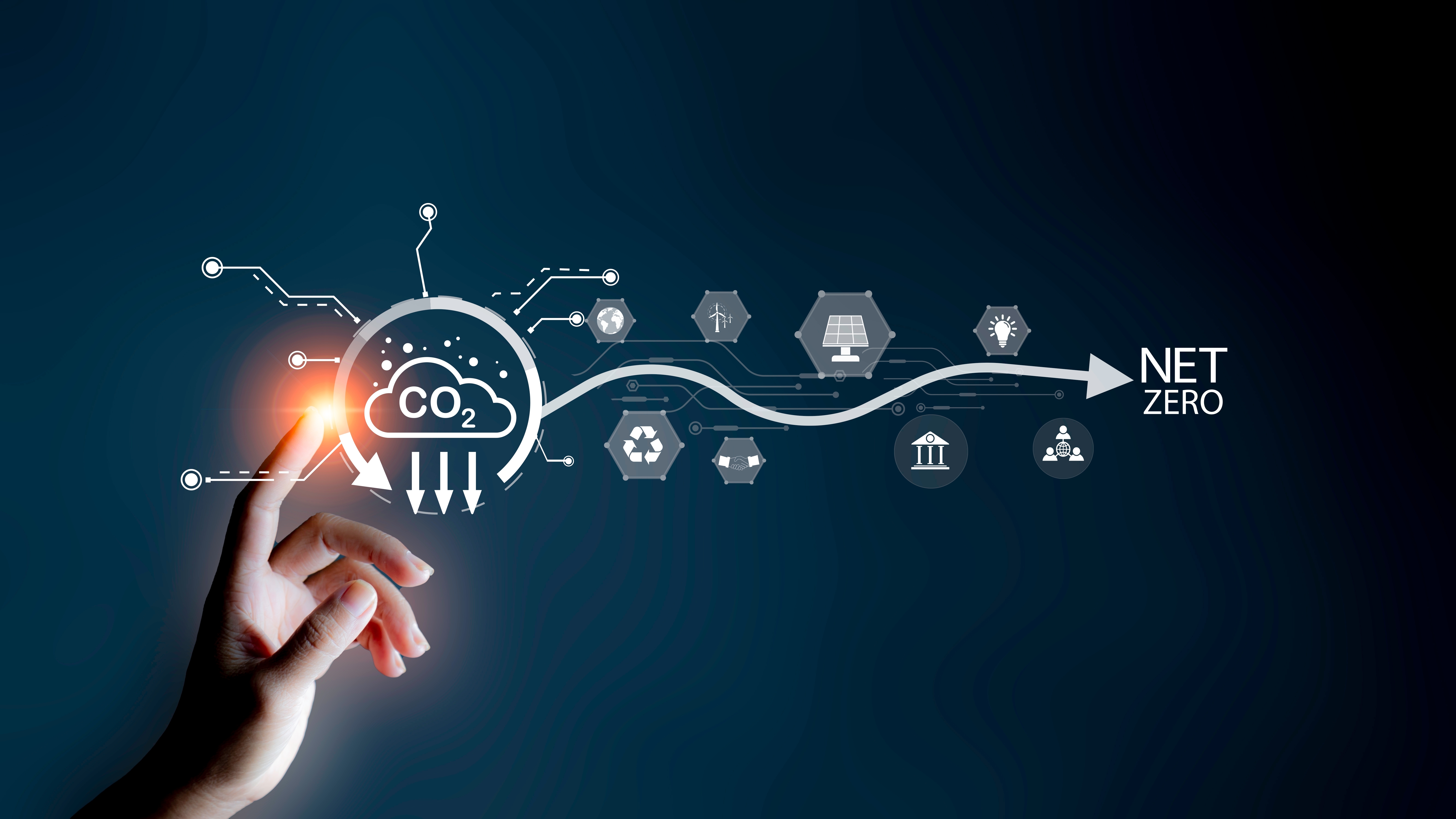Circular economy and Scope 3 emissions: A new frontier in sustainability
In the evolving landscape of sustainable development, the concept of a circular economy is increasingly recognised as a crucial strategy to address the growing concerns of waste management and resource scarcity. This model transcends the conventional linear economy's 'take-make-dispose' approach by reimagining growth and focusing on minimising resource consumption.
Delving deeper into the circular economy, it becomes clear that central to its success is the principle of designing products and systems from the outset with zero emissions and zero waste in mind. This approach necessitates a revolutionary shift in both energy sourcing and the management of the value chain, particularly in the sectors of construction and deconstruction.
Transitioning to another critical dimension, a key aspect of this model is a comprehensive understanding and management of Scope 3 emissions, which refers to the indirect emissions within a company's value chain. These emissions present unique challenges but are vital for the success of a circular economy. It is essential to have a holistic grasp of the entire lifecycle of products and services, ensuring that every stage, from production to disposal, aligns with the principles of sustainability and minimal environmental impact.
Building on the importance of Scope 3 emissions, it's important to recognise that these are the result of activities from assets not owned or controlled by the reporting organisation but are crucial to its operations. These include upstream activities such as the extraction, production, and transport of purchased materials, and downstream activities like the use of sold products and services or decommissioning of assets. For many organisations, Scope 3 emissions represent the bulk of their carbon footprint. Thus, incorporating them into a circular economy model is not merely an option but a necessity for achieving true sustainability.
Reimagining Supply Chains
To align Scope 3 emissions with circular economy principles, companies must first reimagine their supply chains. This involves fostering collaboration with suppliers to ensure the procurement of reusable, recyclable, or biodegradable materials and the adoption of more sustainable energy sources throughout the value chain. By prioritising circularity at the design stage, businesses can influence the entire lifecycle of their products, from procurement to reuse or end-of-life management. Furthermore, encouraging suppliers to adopt circular economy practices can lead to the reduction of Scope 3 emissions through improved resource efficiency and waste reduction.
The use of digital technologies such as blockchain for traceability and artificial intelligence for efficient scheduling and design/material matching can facilitate the required transformations in supply chains. Additionally, companies can innovate by engaging in industrial symbiosis, where waste or by-products of one industry become the raw materials for another, thus closing the loop within the industrial ecosystem. The oil and gas industry is a good example of this, as all by-products of a refinery are used as valuable raw materials. Unfortunately, this chain often ends abruptly, resulting in plastics or medicines ending up in our oceans.

Product Design and Innovation
Product design is at the heart of the circular economy. It is here that companies can make significant strides in reducing Scope 3 embedded emissions by designing products that are durable, repairable, and recyclable. This approach not only extends the lifespan of products but also ensures their materials can be efficiently recovered and re-enter the production cycle, reducing the need for new resource extraction and associated emissions.
Innovation in product design should also take into account the end-of-life phase, facilitating disassembly and promoting the return of products through schemes like take-back programs. By adopting these strategies, companies can significantly diminish the carbon impact of their products once they leave the company's gates, tackling Scope 3 emissions head-on.
The Role of Consumers
In the circular economy, consumers play a vital role. Educating customers on the environmental impact of their purchases and the benefits of a circular approach can influence consumer behaviour. Companies can drive this change by providing products-as-a-service, where the emphasis is on leasing or sharing rather than owning. This shift not only extends product life but also keeps the responsibility for the product's end-of-life within the company's purview, ensuring a more circular approach and a reduction in Scope 3 emissions.
Moreover, engaging customers in the circular process through incentivised return systems for used products can support the creation of a closed-loop system, where products are returned, recycled, and reintroduced into the economic cycle.
Investments and Finance
Financing is key to driving the circular economy transformation, particularly in addressing Scope 3 emissions. Investments in circular economy ventures can catalyse innovations in material recovery, renewable energy, and sustainable product design. Financial institutions and investors are recognising the long-term value creation potential of circular business models, thus funding is becoming increasingly available for initiatives that demonstrate a commitment to reducing Scope 3 emissions.
The use of green bonds and other sustainability-linked financial instruments can provide the necessary capital for businesses to transition towards circular practices that minimise Scope 3 emissions. These financial tools often come with requirements or incentives linked to sustainability performance, ensuring that investments are driving genuine change. While linking investments to Scope 3 emissions is a correct approach, this necessitates banks and funding institutions to adapt, allowing new structures of security and revising perimeters of control to accommodate these innovative financing models.
Policy and Regulation
Policy and regulation can accelerate the adoption of circular economy practices to manage Scope 3 emissions effectively. Governments can introduce standards and regulations that promote product stewardship, encouraging companies to take responsibility for the entire lifecycle of their products. Incentives for reduced emissions in supply chains, tax benefits for circular business practices, and penalties for unsustainable waste management can further guide businesses towards circularity.
The implementation of carbon pricing mechanisms, which include Scope 3 emissions, can also be a powerful tool. By putting a price on carbon emissions, businesses are economically motivated to identify and implement circular practices that will reduce their overall emissions footprint. Furthermore, treating embedded carbon as a decommissioning liability can compel companies to have recycling plans or similar strategies in place to minimise the liability on an organisation's books. This approach would require the development of new International Financial Reporting Standards (IFRS) and Generally Accepted Accounting Principles (GAAP).
Collaborative Efforts and Partnerships
Tackling Scope 3 emissions within a circular economy framework requires a collective approach. No single entity can address the complexity of Scope 3 emissions alone. Cross-sector partnerships and collaboration among businesses, governments, NGOs, and consumers are crucial. These collaborations are essential not only for sharing knowledge, resources, and technologies but also for enabling regulators to align taxes, reporting, and recognition standards with sustainability goals.
Industry alliances can establish shared objectives and co-create circular solutions that are scalable and impactful. By joining forces, organisations can drive systemic change, influencing each other and the wider economy to achieve a significant reduction in Scope 3 emissions.
Conclusion
Embracing a circular economy is essential for a sustainable future, and addressing Scope 3 emissions within this framework is where the real challenge and opportunity lie. By rethinking supply chains, innovating in product design, engaging consumers, securing investments, encouraging supportive policies, and fostering collaborations, businesses can pave the way towards a more sustainable and resilient economic growth. The transition to a circular model is not just an environmental imperative but also a strategic business move in the battle against climate change and resource depletion. With Scope 3 emissions firmly in sight, the circular economy has the potential to deliver far-reaching benefits that extend beyond environmental sustainability to economic growth and social well-being, truly encapsulating a triple bottom line approach for the 21st century and beyond.
Energy Connects includes information by a variety of sources, such as contributing experts, external journalists and comments from attendees of our events, which may contain personal opinion of others. All opinions expressed are solely the views of the author(s) and do not necessarily reflect the opinions of Energy Connects, dmg events, its parent company DMGT or any affiliates of the same.
KEEPING THE ENERGY INDUSTRY CONNECTED
Subscribe to our newsletter and get the best of Energy Connects directly to your inbox each week.
By subscribing, you agree to the processing of your personal data by dmg events as described in the Privacy Policy.
















